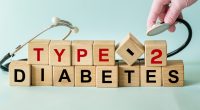Cancer survivors may benefit from resistance training (RT) or high intensity interval training (HIIT), according to new research.
The study showed that both these types of exercise produced sufficient levels of myokines to be effective in the fight against cancer. Myokines are proteins with anti-cancer effects which are produced by muscles during exercise.
HIIT comprises a ‘stop and go’ approach to exercise, with short intense bursts of exercise combined with short recovery periods.
- DOMS: Experts explain whether you should exercise when you are still sore
- Intensity of exercise could alter gut health in athletes
- Calorie intake more likely to cause obesity than lack of exercise
Researchers from Edith Cowan University followed a group of breast cancer survivors as they completed a 12-week training programme, using blood samples to examine how resistance training and HIIT impacted on the growth of breast cancer cells.
Francesco Bettariga, PhD candidate, explained: “We found that blood taken after rest, following either resistance training or HIIT, reduced the growth of these cancer cells in vitro by 22% and 25%, respectively. This suggests both types of exercise may help slow cancer cell growth.
“There was no major difference between the effects of RT and HIIT, meaning they seem to work equally well. Although, interestingly, with HIIT, the reduction in cancer cell growth was linked to an increase in lean muscle and a decrease in body fat after 12 weeks of training.
“Recently, we also found that people with higher physical fitness, like stronger muscles and better heart and lung health, had a 31% to 46% lower risk of dying from any cause. This supports the idea that exercise could be a powerful part of cancer treatment.”
The team’s previous research found that, along with reducing fatigue, anxiety and depression in people during and after cancer treatment, exercise can reduce the risk of cancer recurring or death by about 40%.
- Matching your exercise to your personality could make workouts more enjoyable and effective
- Reducing blood flow during exercise shows promise for people with rheumatoid arthritis
- Exercise is more effective than drugs in reducing risk of cancer returning
Resistance and weight training improves muscle strength and muscle mass, while HIIT has a different impact – it boosts cardiorespiratory fitness and reduces fat mass.
Mr Bettariga said it was important to find out if different types of exercise cause different effects on myokines and their potential cancer suppressive effects, saying: “The results from our research showed that both groups of participants had higher levels of myokines at the end of the 12-week programme than at the beginning, which means, regardless of the exercise you do, you can gain benefit.”
The team advised that exercise should be undertaken following medical advice.
Read more in Medicine & Science in Sports & Exercise







